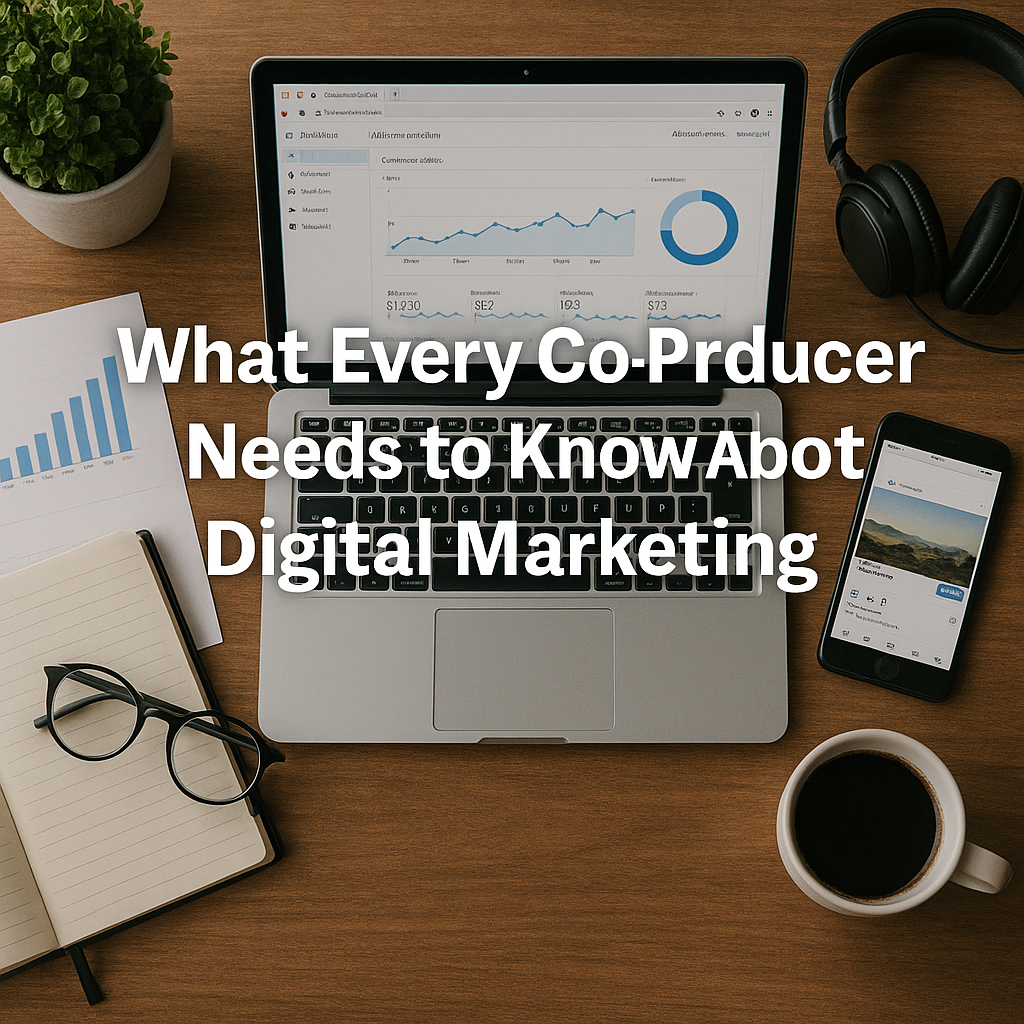If you want to succeed as a digital course co-producer, you can’t ignore digital marketing. Even if you’re not an expert in paid traffic or content creation, having a solid understanding of how to reach and convert an audience is essential.
In this article, we’ll walk through the fundamentals of digital marketing that every co-producer needs to know — from positioning and messaging to traffic and analytics. Whether you’re launching your first course or improving your next one, these principles will help you drive results and scale impact.
Why Digital Marketing Is Crucial in Co-Production
A brilliant course with no marketing is like a billboard in the desert — no one sees it, no one buys it.
As a co-producer, your role often includes building the marketing engine. That means you need to understand:
- Who the course is for
- Where to find those people
- How to speak their language
- How to guide them to purchase
You’re not just helping an expert teach — you’re helping them build a business.
Step 1: Define the Target Audience
Before running ads or designing a landing page, get clear on who the course is for.
Ask:
- What problem does this course solve?
- Who experiences this problem?
- What stage are they in (beginner, intermediate, advanced)?
- Where do they spend time online?
Create a simple buyer persona: name, job, pain points, desires, online habits. This clarity will shape your entire strategy.
Step 2: Craft a Compelling Offer
Even great content needs to be positioned well. The difference between “learn Excel” and “get promoted faster with Excel mastery” is marketing.
Your offer should include:
- A clear promise or result
- Defined audience
- Course structure (modules, bonuses)
- Value proposition (why this course?)
Use headlines like:
- “Get Your First Freelance Client in 30 Days”
- “Master Instagram for Local Business Owners”
- “Turn Your Expertise into a Profitable Course”
✅ A great offer connects emotionally and solves a real problem.
Step 3: Build a Simple Funnel
A funnel is just a guided path from stranger to buyer. In co-productions, you’ll often use one of these three:
1. Lead Magnet Funnel
- Freebie (ebook, checklist, template)
- Email sequence
- Course pitch
2. Webinar Funnel
- Registration page
- Live/recorded class
- Sales pitch at the end
- Deadline and urgency
3. Mini-Course Funnel
- Free or low-cost intro course
- Upsell to the main course
Use tools like ConvertKit, ClickFunnels, or Hotmart Pages to build and track each step.
Step 4: Leverage Organic Content
Not every launch needs paid ads. Organic marketing is powerful and helps build long-term authority.
Content types that work well:
- Instagram Reels and Stories
- YouTube tutorials or interviews
- Blog posts with SEO optimization
- Email newsletters
- TikTok educational series
✅ As a co-producer, help the expert plan content or repurpose lives into bite-sized posts.
Step 5: Understand Paid Traffic (Basics)
Paid ads help scale faster — but they require planning, testing, and budget.
If you’re running ads:
- Start small ($5–$10/day)
- Focus on lead generation first
- Use Meta Ads (Facebook/Instagram), Google Ads, or YouTube Ads
- Create variations (copy, image, audience) to test performance
Track metrics like:
- Cost per lead (CPL)
- Conversion rate
- Return on ad spend (ROAS)
You don’t need to run ads yourself — but you must know how they work and how to analyze results.
Step 6: Write High-Converting Copy
Copy is what convinces. Whether it’s on an ad, landing page, or email, your words must move people to action.
Great copy is:
- Simple and clear
- Benefit-driven
- Conversational
- Urgent but ethical
Use the problem → solution → transformation structure:
“Struggling to get clients online? This course will teach you how to build a brand that attracts leads — even if you have zero experience.”
✅ Copy is a co-producer’s secret weapon — study and practice it regularly.
Step 7: Use Email Marketing Effectively
Email is still one of the most profitable marketing tools — especially for launches.
Key Email Sequences:
- Lead magnet delivery
- Launch sequence (5–7 days)
- Cart open and closing reminders
- Post-launch follow-ups
Use platforms like MailerLite, ConvertKit, or ActiveCampaign.
✅ Email builds trust and keeps your audience engaged between launches.
Step 8: Install Tracking and Measure Everything
If you can’t measure it, you can’t improve it. Use analytics to learn what works.
Essential Tracking Tools:
- Facebook Pixel – for retargeting and ad optimization
- Google Analytics – for traffic sources and behavior
- Hotmart dashboard – for sales tracking
- UTM parameters – to track links in emails and ads
Set KPIs before launching, such as:
- Cost per lead
- Sales conversion rate
- Revenue per email subscriber
✅ This data helps you make smarter decisions — and impress future expert partners.
Step 9: Optimize and Iterate
Once your launch is complete, review the results:
- What emails had the highest open rate?
- Which ad set performed best?
- Where did most sales come from?
- What objections did leads mention?
Use this insight to improve your next offer, page, or content plan.
Co-production is a cycle: launch, learn, optimize, repeat.
Final Thoughts: Co-Producers Are Marketers First
You don’t need to be a digital marketing guru to co-produce a course — but you do need to understand the principles.
Marketing is how you bring the expert’s knowledge to the right people, in the right way, at the right time.
By mastering digital marketing fundamentals, you stop being just a “partner” and become the engine that drives results — and that’s what makes you irreplaceable in a co-production.

